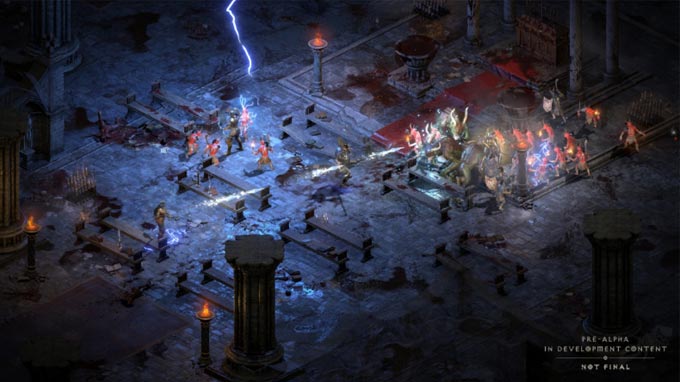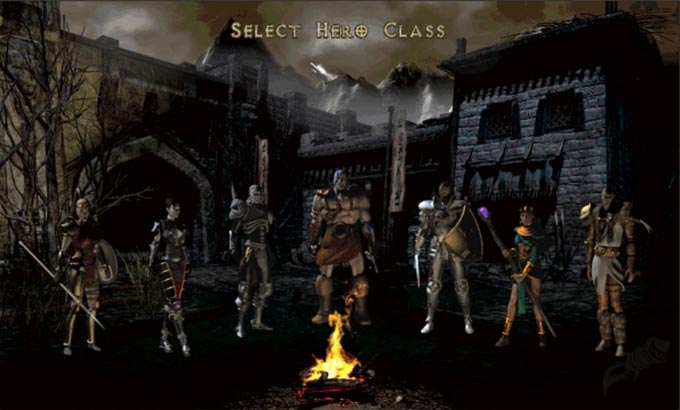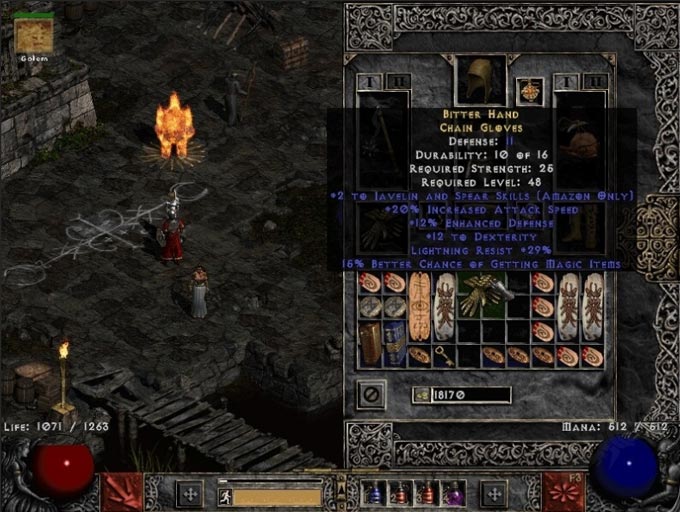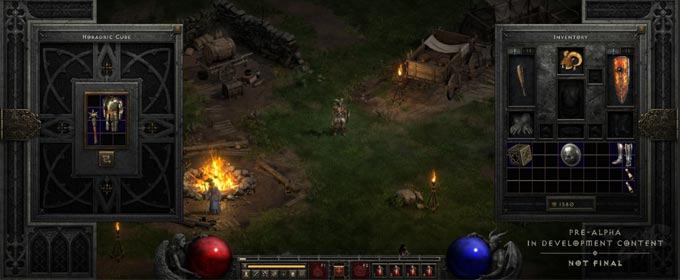Raiditem is the most quality site for WOW Gold & other game items buying.

News
What to Expect from Diablo II: Resurrected
Blizzard Entertainment decided to revive one of their most influential games. What evolved into a community dream after the critically reviewed release of Diablo III has finally come true with the announcement of Diablo II: Resurrected during 2021's BlizzConline.
But what exactly did this critically acclaimed game provide that so many gamers love and cherish up to this day? How did Diablo II become the ARPG classic that Blizzard decides to bring back from literal Hell this year?
We take a closer look at the spicy ingredients of Diablo II's timeless game formula and how Diablo II: Resurrected could enhance this unforgettable gaming experience.

For Diablo II: Resurrected, it has to be of utmost importance to recreate that particular look and feel of combat gameplay. Remember, Diablo II natively runs at 25 frames per second, and every single frame represents a fraction of a sprite animation; this technical fact is one of the main reasons why fighting in Diablo II feels so impactful.
We know that Resurrected will be upscaled to 60 FPS, so more than double the native frame rate. In theory, such a change could result in a much slower look and feel compared to the original game.
But die-hard fans should know what potential the frame rate adjustment holds in terms of combat gameplay. A majority of the game’s classes rely on increased attack or cast speed to deal more damage over time - in fact, it is one of the most meaningful and obvious ways to increase your overall character strength.
Diablo experts also know that faster combat animations were somewhat choppy in Diablo II because frames needed to be skipped in order to complete those animations in time. With 60 frames per second, fast animations in Resurrected will look and feel much smoother, potentially enhancing the already agile Diablo II isometric combat gameplay experience.

Classes
Another game feature that added to the sheer infinite amount of replayability of Diablo II was its class system.
From today’s point of view, offering distinct class choices shouldn’t be something special. But being able to pick between seven different character archetypes? That was more than unheard of in the very early 2000s.
The key to success in the case of class choice was Diablo II’s asymmetrical class design. The game provides each of the seven classes with a very special set of abilities. To have access to a wide range of gameplay archetypes not only across but also within those classes enables players to experience the game in different ways.

Through a combination of heavy RPG-style class identity and unique player choices based on your selected class toolkit, Diablo II set a high bar in terms of a truly diverse and replayable gameplay experience back in the day - not least thanks to in-game content such as class-exclusive items and charms.
With Resurrected, the game's class design won’t change - but the way we look at them definitely will in the truest sense of the word. Could certain class gameplay become even more fun with the upcoming graphics facelift? Which classes could benefit from improved animations and frame rate, and will that influence player choice compared to twenty years ago?
Looting, Items, and Trading
Graphics, look and feel, class diversity - all that is nice and great, but we all know what Diablo games are really about: LOOT. Many games of today are full of diverse loot and countless different opportunities to obtain loot.
But 20 years ago, Diablo II’s “loot formula” was ground-breaking. Every monster corpse, every locked chest, every seemingly empty barrel could contain that one priceless legendary item. Randomly generated loot of all sorts dropped from basically all available sources. Of course, bosses and rare monsters had increased chances to drop certain loot, but the feeling that every missed monster was a missed opportunity for loot has been a constant companion for ARPG players ever since.
In addition to that, loot rarity was still a somewhat unfamiliar concept when Diablo II was released. It is common knowledge that both Diablo and World of Warcraft introduced “color-coded loot” as we know it today, conditioning a whole generation of gamers to release heavily increased amounts of dopamine whenever they see an orange-colored item in basically every loot-based game developed in the current century.

But it was once again a combination of randomized loot generation and its deterministic use for character optimization that turned Diablo II’s item system into the most exciting “carrot on a stick” in gaming back in the day.
It is safe to say that Diablo II’s items at their core carried one mantra: “You get what you see”. All stats and bonuses were easy to understand, and players could identify a better item without something like a comparison tooltip which many modern-day ARPGs offer.
This made the game highly enjoyable for the average, more casual player, especially compared to more complex RPGs at the time - but Diablo II also offered a surprising amount of min-maxing, something that was extremely out of the ordinary to do when the game released. Extensive information about extended in-game meta-data like attack or cast speed breakpoints was scarce and often just decent estimates. That left all kinds of Diablo II players with a certain amount of mystery as well as self-determination regarding character customization.
Deciding what items were good for your build on your own also established a trading infrastructure like never seen before in an online game. Gems and runes built the foundation of a player-driven economy, and the newly introduced Battle.net community platform allowed players to optimize their beloved characters into infinity. In addition to that, loot in Diablo II was much less “build-enabling” compared to its successor Diablo III. Sets and legendary items had their place in the item meta-game, but rare items had their right to exist as well - a fact that enlarged the table of tradable loot and made it much more diverse.

Now back to the present: As Classic WoW has undoubtedly shown, 20-year-old games have been figured out over time. The publicly available information about Diablo II will lead players into a more optimized playstyle around targeted loot - and Resurrected won’t be able to change that.
The remake’s main goal, in this case, should be to keep things as they were. A shared account stash? Item comparison tooltips? All these quality-of-life changes coming to the game with the release of Resurrected are very much welcome but won’t make a difference in the bigger picture of loot, gear, and trading.
The one thing regarding loot I would love to see developed in Resurrected is the introduction of a solo self-found option. Games like Path of Exile show that trading can be a hassle and very time-consuming, so an additional ladder system with characters that compete only with self-found gear could attract an additional target group of ARPG players.
Why Play Diablo II: Resurrected?
If you’re on the hunt for a new and refreshing gameplay experience, then Resurrected certainly won’t be your cup of tea. Diablo II revolutionized a whole genre, but ARPG game design had the chance to improve over the last twenty years.
A graphics and sounds overhaul can sugarcoat some of the underlying design flaws of Diablo II, but they will still appear nonetheless. In addition to that, improved Battle.net integration will hopefully make it a lot harder to cheat in the game, but don’t expect state-of-the-art protection measures against those who try to illegally gain advantages.
Players that share a deep love for the Diablo franchise, however, should be in for a treat when playing Diablo II: Resurrected. Experiencing gameplay including graphics, audio, and cinematics on a new, much more modern level will satisfy the needs of nostalgics and die-hard fans alike.
Diablo II: Resurrected will be more than a trip down memory lane.
Of course, it is made to bring back the original fan base of the ARPG classic first and foremost. However, I feel like we will see a surge of ARPG players that didn’t have the chance to experience the rise of Diablo II back in the 2000s play Resurrected, and have a lot of fun defending Sanctuary and descending into Hell to deal with the Prime Evils and their minions.
Tags:

Kindly Reminder:Possible account termination when using illegal leveling or illegally obtained gold.